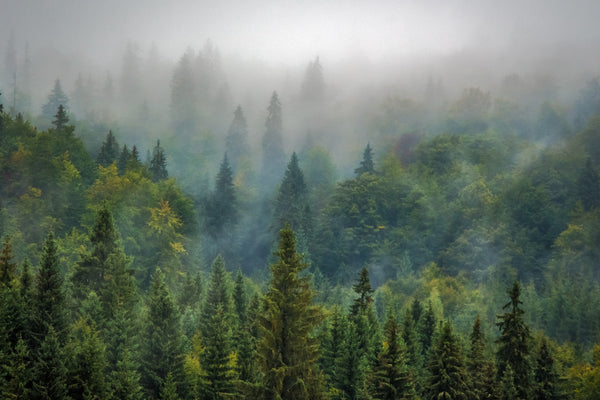Trees Play an Important Role in reducing air pollution and absorbing greenhouse gases
From helping to clean our water to providing food and shelter, relieving our stress, and promoting jobs, the benefits of trees to people and the environment are well documented. In addition to releasing clean oxygen for us to breathe, trees play a critical role in removing air pollutants and greenhouse gases from atmosphere. In the contiguous United States alone, urban trees remove an estimated 711,000 metric tons of air pollution every year.

How does air pollution affect human health?
For many communities around the world, poor air quality is a critical issue that negatively impacts human health, damages landscapes and ecosystems, reduces visibility, and more. Air pollution in the form of particulate matter is linked to a range of human health conditions including bronchitic symptoms, increased risk for glaucoma, heart attacks, changes in vascular function, autism, high blood pressure, cognitive development problems in children, heart failure, and increased mortality.
Here’s how a few common air pollutants have been known to impact human health:
- PM2.5, which is the main culprit behind the hazy skies that are a familiar sight for many of us, can cause serious health issues when it’s inhaled.
- SO2 and NO2 are harmful to our respiratory systems. They also react with other airborne substances to create more particulate pollution, and contribute to acid rain.
- Ground-level ozone can be harmful to our health when breathed in, and impacts sensitive vegetation — particularly during the growing season
- CO can be deadly when it accumulates indoors, and reduces the amount of oxygen that is transported via our bloodstream to critical organs such as the heart and brain

how trees reduce air pollution
Do trees help with air pollution? Absolutely. According to the US National Park Service, planting trees helps to improve air quality through 3 key impacts:
- Altering the concentration of pollutants by reducing air temperatures
- Reducing energy consumption in buildings (particularly for temperature control), which in turn reduces the consumption of energy from polluting sources
- Directly removing pollutants from the air
These impacts combine to create powerful, lasting effects for the the communities where trees are planted.
The Two main types of pollutants that trees remove from the atmosphere:
- Gaseous air pollution: Tiny pores on the leaves of trees, called stomata, inhale air that contains toxic pollutants. Once absorbed, gases, including pollutants such as SO2, NO2, CO, and ozone, diffuse within the inner surfaces of the leaves, and are broken down.
- Particulate matter: Trees remove some particulate matter from the air by temporarily “catching” them on their vegetative surfaces. Fine particulate matter that passes over trees sticks to their leaves and stems. When it rains, these particulates wash off of the tree and are carried into the soil or dissolve into stormwater.

how do trees produce oxygen?
Trees produce oxygen through a process that you’ve probably heard of, called photosynthesis. The tree’s leaves absorb carbon dioxide and water from the air, and use solar energy to convert it into chemical compounds, including sugars, that it can consume as food. Oxygen is a by-product of this process and is released by the tree. Through this essential life-giving process for the tree, they synergistically support human life with the essential oxygen that we cannot live without. It has been estimated that one large tree can provide a day’s supply of oxygen for up to 4 people.

how much co2 do trees absorb?
In addition to absorbing airborne pollutants and releasing clean oxygen for us to breathe, trees absorb carbon dioxide from the atmosphere and use it to build their leaves, branches, trunks, roots, and the soil.
To determine the amount of carbon dioxide a tree can absorb, we combine average planting densities with a conservative estimate of carbon per hectare to estimate that the average tree absorbs an average of 10 kilograms, or 22 pounds, of carbon dioxide per year for the first 20 years.
That adds up to a powerful impact on our climate, but it’s just the tip of the iceberg when it comes to the benefits of trees and forests. Want to be part of the solution? Plant a tree today!
